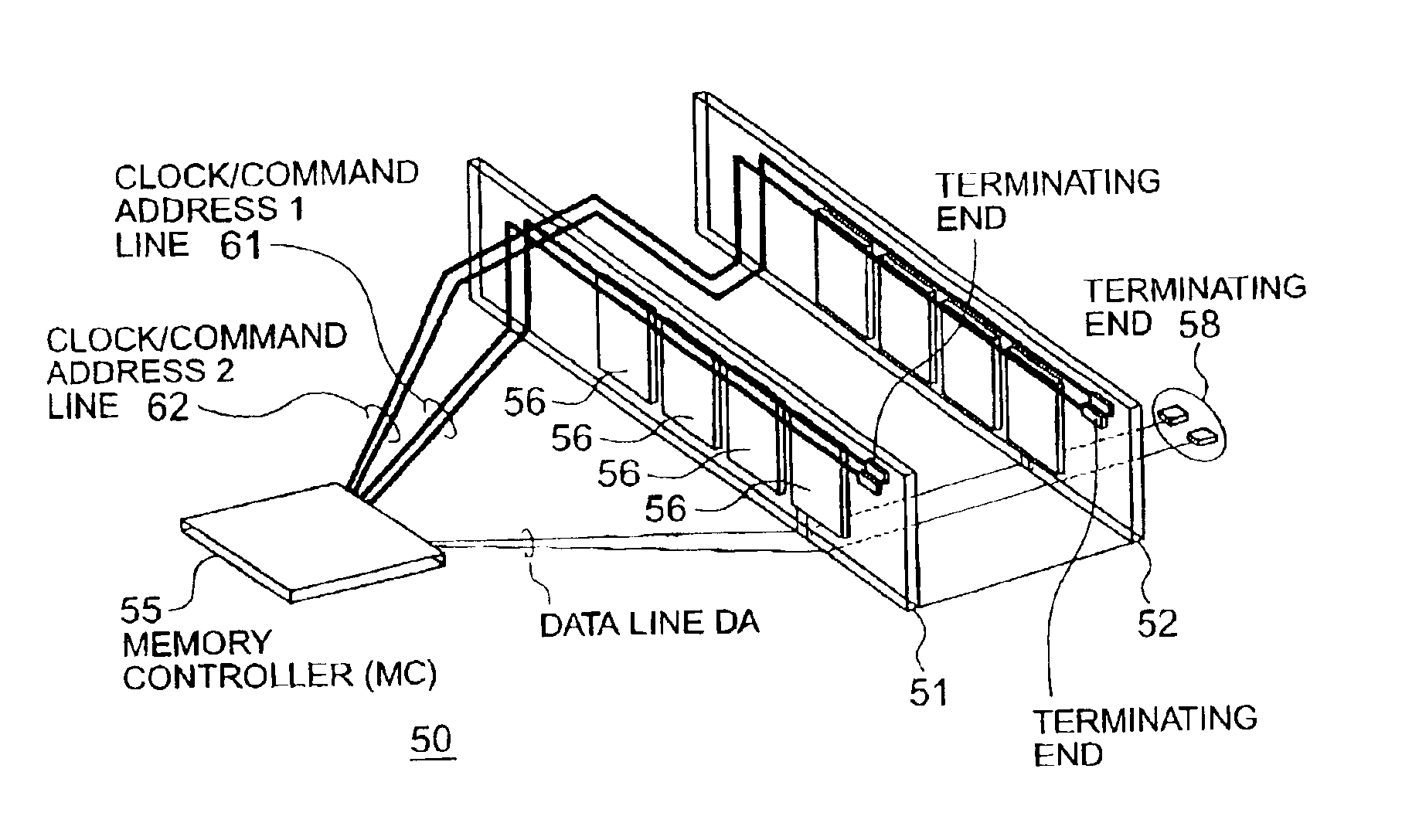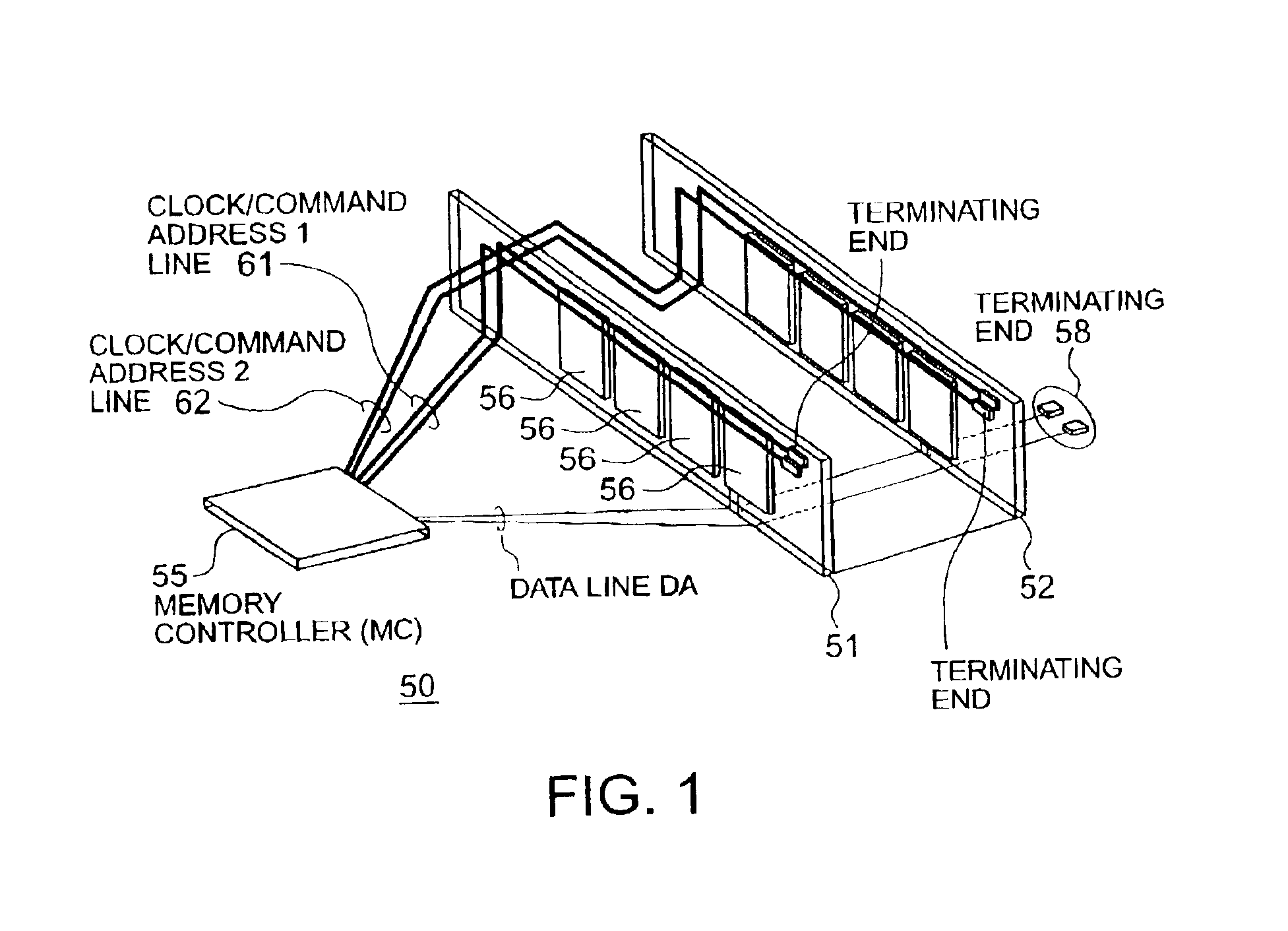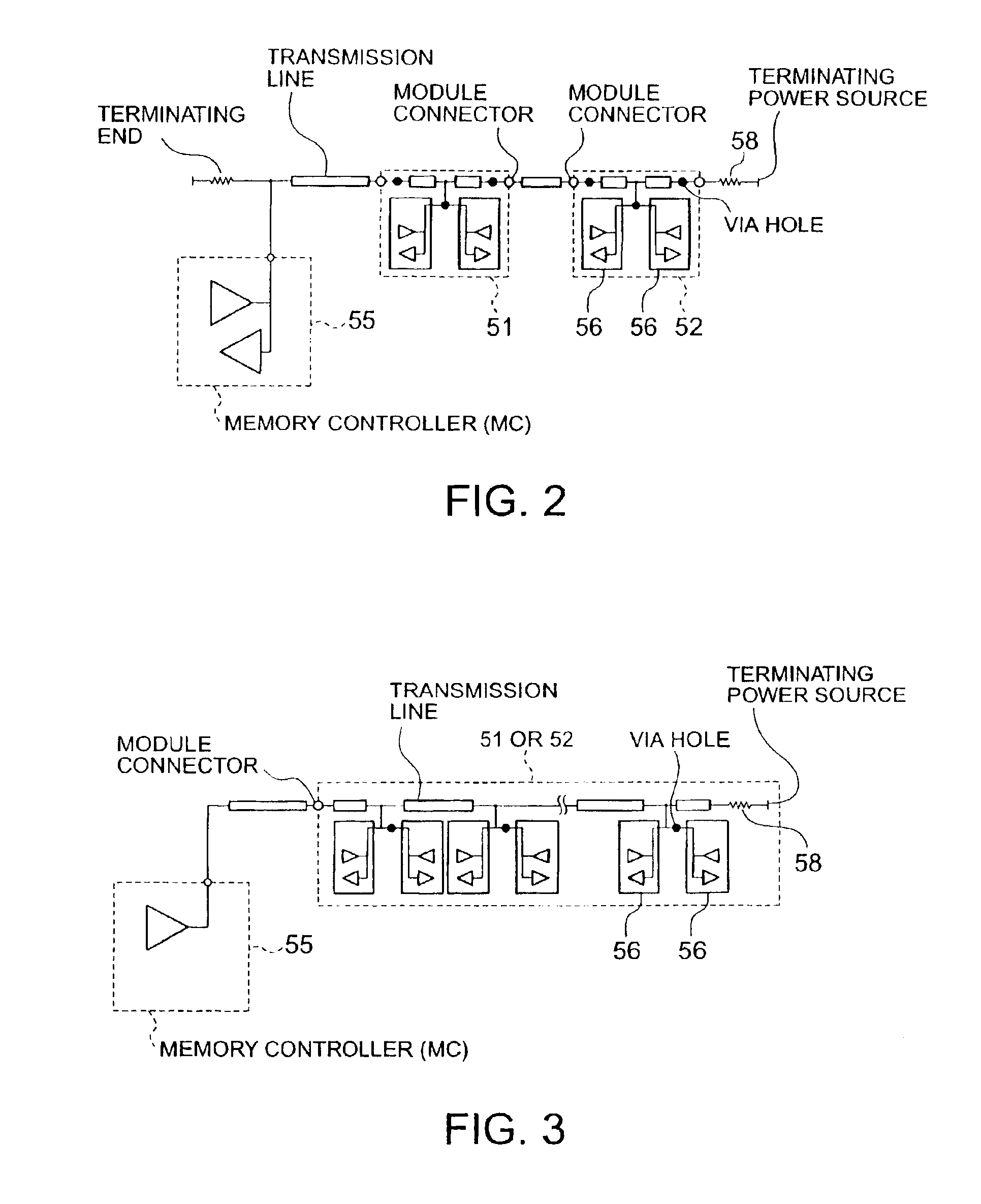Memory system and control method for the same
a memory system and control method technology, applied in the field of memory systems, can solve the problems of timing mismatches, inability to analogize the timing relationship between the address command signal, the data signal and the clock signal, and the inability to analogize the specific configuration for transferring address command signals and data signals to and from the drams by utilizing the timing relationship, so as to reduce the clock generation the effect of reducing the clock frequency of the data signal
- Summary
- Abstract
- Description
- Claims
- Application Information
AI Technical Summary
Benefits of technology
Problems solved by technology
Method used
Image
Examples
Embodiment Construction
[0119]Referring to FIG. 1, the configuration of a memory system in accordance with the invention will be schematically explained. The memory system shown in the figure has a memory controller (MC) 55 mounted on a motherboard 50, and a first module 51 and a second module 52 provided in a standing manner on the motherboard 50 through a connector (not shown). In this example, the front and back surfaces of the modules 51 and 52 are provided with a plurality of memory devices (DRAMs in this case) 56 arranged in parallel, as illustrated. More specifically, the DRAMs 56 are disposed in parallel with gaps provided therebetween with respect to the direction crossing the lengthwise direction (i.e., the direction of the short sides) of the modules 51 and 52. The present invention can be also applied to a case where a plurality of memory devices is disposed on either the front or the back of the modules 51 and 52.
[0120]The MC 55 is connected to the DRAMs 56 on the modules 51 and 52 through dat...
PUM
 Login to View More
Login to View More Abstract
Description
Claims
Application Information
 Login to View More
Login to View More - R&D
- Intellectual Property
- Life Sciences
- Materials
- Tech Scout
- Unparalleled Data Quality
- Higher Quality Content
- 60% Fewer Hallucinations
Browse by: Latest US Patents, China's latest patents, Technical Efficacy Thesaurus, Application Domain, Technology Topic, Popular Technical Reports.
© 2025 PatSnap. All rights reserved.Legal|Privacy policy|Modern Slavery Act Transparency Statement|Sitemap|About US| Contact US: help@patsnap.com



